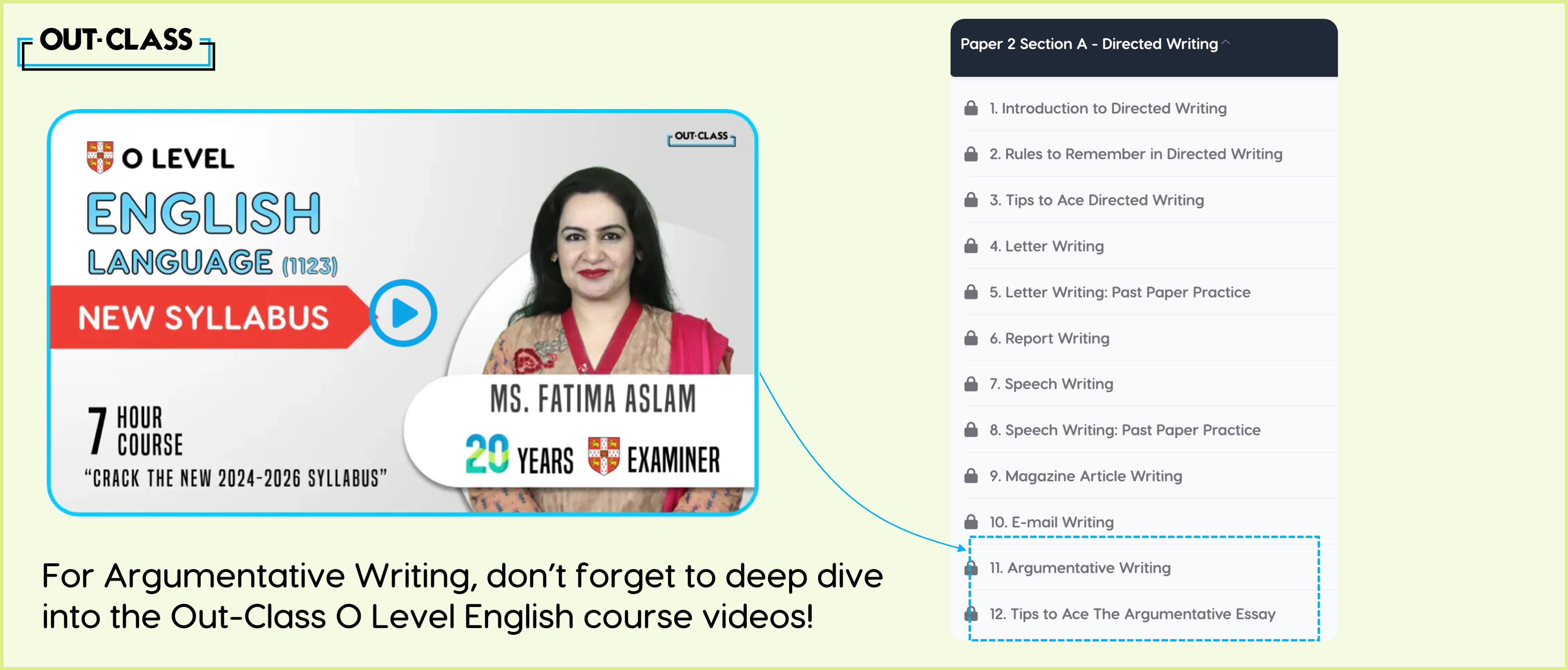At various points in your academic life, you will find yourself in a situation where you will have to try and convince someone of a certain point of view, such as in your IGCSE and O Level English paper.
In such scenarios, it takes more than just your opinion to be heard. Without a proper structure based on evidence, sound reasoning and facts that help support your case, you risk your audience (or the CAIE examiner) not buying into your argument.
What is the Purpose of Argumentative Writing?
The purpose of argumentative writing is to enable IGCSE and O Level English students to evaluate and examine their own and others’ ideas carefully and meticulously, judge evidence and methods of investigation and ultimately draw a conclusion based on fact. One way to practice this is by practicing on IGCSE and O Level English past papers.
For all its benefits, argumentative writing can be tricky for some. However, with this step-by-step guide, you can be well on your way towards drafting compelling argumentative essays in no time.
Following are just some of the elements of argumentative writing.
How to Outline an Argumentative Essay:
The first step is to create an outline for your essay. Argumentative writing has a very straightforward structure that allows you to present your point of view and your reasoning with evidence. This includes:
Introduction:
It is where you outline the topic and provide background information. Then, state the evidence you plan to present along with your thesis. Therefore, it can also be the place where you define argumentative writing.
Thesis Statement:
This is represented by a concise sentence that illustrates the main point of your argument.
Body:
This contains arguments that talk about why you support your thesis. Each paragraph within this section should have a separate reason or evidence that helps you support your main point, preceded by a topic sentence that clearly states the reason why the reader should support your position. These can be done through examples, research, statistics, studies and citations.
Part of the body also includes presenting opposing points of view followed by evidence that adequately disproves them. This allows the reader to get a neutral and completely unbiased understanding of the main topic.
Conclusion:
Finally, a conclusion is what enables the writer to summarise the points made earlier and then reiterate the main point of the essay. This can be further substantiated through personal anecdotes that detail how the topic affects them.
Types of Argumentative Writing Components:
There are many ways in which you can present your chosen argument. These argumentative writing components are as follows:
Classical
Also known as the Aristotelian style of argument, this is the most popular style of argumentative essay O Level & IGCSE students employ mainly because it adheres to a very straightforward process; it starts with presenting the main argument, then stating the writer’s opinion and finally, convincing the reader why the writer’s stance is the correct one. This is particularly effective when the audience in question does not have a lot of information regarding the topic and is, therefore, looking to formulate an opinion about it.
Rogerian
Some topics may not be as simple to present as others. In such cases, this particular style of argument helps as it allows the writer to present two sides of the same topic, ultimately encouraging the reader to choose the middle ground. The essay starts with stating the problem, acknowledging the opposing side of their chosen argument and then explaining why the writer’s point of view is the most beneficial.
Toulmin
This style of argument can also be used for topics that are divisive and polarized. It differs from the Rogerian style of argument because it presents just one side of the overall argument and uses facts, statistics and evidence to ultimately make the claim difficult to argue with.
What is the Difference Between Persuasive and Argumentative Writing:
Due to their similarities, one can confuse argumentative writing with persuasive writing when attempting the IGCSE or O Level English paper. After all, both use introductions, thesis statements, body paragraphs and conclusions to ultimately convince the reader to accept the writer’s point of view. However, where they both differ is in the manner in which they try to appeal to the reader. Argumentative writing uses reasoning and logic to convince the reader whereas persuasive writing attempts to appeal to the emotions of the reader. Other differences include:
-
General Perspective: In persuasive writing, opinions are generally blended with facts and a wide range of vocabulary whereas in argumentative writing, credible data and statistics are used to convince the reader
-
Audience: In persuasive writing, there is an intended audience to which the writer is addressing his essay whereas in argumentative writing, the writer is mostly concerned with getting the truth out in the open
-
Attitude and Tone: Persuasive writing is personal, and has a passionate and emotional tone; the writer uses an aggressive approach when it comes to convincing the reader. Argumentative writing, on the other hand, maintains an objective tone throughout the essay and allows the reader to make his/her own decision regarding the topic.
Conclusion:
By practicing the above techniques and keeping in mind the above argumentative writing characteristics and components, you should be able to effectively present your point of view and convince your IGCSE and O Level English examiner/audience to accept your claim as fact. Such skills will prove to be incredibly helpful in the long run. Good luck!
For argumentative writing, don't forget to deep dive into the Out-Class IGCSE/O Level English course video!





